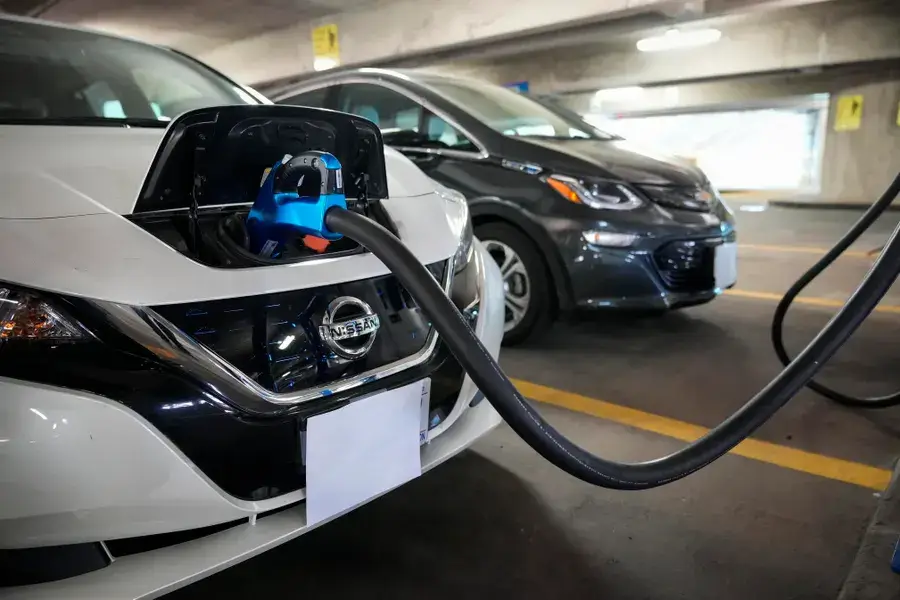The benefits of switching to an EV/HEV powertrain solution can be significant. Whether you are a driver, an entrepreneur, or an environmentally conscious consumer, switching to an EV/HEV can help you improve your life and your planet. Electric vehicles (EVs) and hybrid electric vehicles (HEVs) can lower fuel costs by as much as 60 percent. They also have lower maintenance and repair costs than traditional gas-powered cars.
Lower Fuel Costs
The first and most obvious benefit of switching to an EV/HEV powertrain solution is that it will save you money on fuel. Electric vehicles require far less fuel than traditional internal combustion engines (ICEs) because they use a battery pack instead of a gasoline engine to power the wheels. EVs and HEVs can also save you money on maintenance costs. According to experts like Delta Electronics, fully electric vehicles have fewer components than gas-powered cars, meaning they don’t need to be repaired as often or as expensively.
Even better, EVs use far less electricity than ICE vehicles to power their motors. According to a study from 2020 Consumer Reports, a fully charged electric vehicle can cost about 60% less to run than an ICE car.
However, this can vary depending on the region and how much energy is used to charge the batteries. Some areas have very high electricity rates, while others are quite affordable. Hybrid electric vehicles (HEVs) can offer a great balance between eco-friendly motoring and go-anywhere flexibility. They also produce significantly fewer tailpipe emissions than ICE-powered vehicles.
Lower Maintenance Costs
Regarding maintenance, EVs and HEVs generally require less upkeep and repair than traditional fuel-powered vehicles. This is due in large part to the fact that the battery and motor of an EV are designed with efficiency and longevity in mind, so they last much longer than those found in a conventional fuel engine. Likewise, regenerative braking on an EV can help extend the life of a vehicle’s brakes and other parts. This is because the motion of a car can be turned into stored energy, which is then recharged when the car slows down by using an electrical motor to turn the wheels. While many people consider a hybrid electric vehicle (HEV) when they think of an EV, the truth is that a pure all-electric vehicle can also be considered an EV.
The main difference is that with a pure BEV, you’ll have to charge the batteries from a public or private charging station, while an EV can be charged at home. A recent study by Consumer Reports revealed that a typical EV would have a lower maintenance cost than the average gasoline-powered vehicle over the lifetime of ownership. This includes not only routine maintenance but also items like tires and insurance. This can result in significant savings over the long run for consumers.
Reduced Emissions
One of the biggest benefits of switching to an EV/HEV powertrain solution is reduced emissions. Fossil fuel-powered internal combustion engine (ICE) vehicles generate many greenhouse gases (GHG) emissions, leading governments worldwide to impose strict emissions standards for cars and trucks. Electrified vehicles, including hybrid electric vehicles (HEVs) and plug-in hybrids, reduce GHG emissions because they use less fuel. This also means the vehicle is cheaper to run over a long period. HEVs combine an engine’s power with a battery to increase fuel efficiency and decrease GHG emissions, and they have become more common on the road.
However, they can still be expensive compared to pure fossil-fuel ICE vehicles, and they are unsuitable for single-car households. Hybrid electric vehicles (HEVs) are a step toward full battery electric vehicles (BEVs), and they have reduced their cost as battery technology has progressed. They are expected to reach price parity with ICEVs by 2024, and they will be significantly more affordable in the future.
A Better Driving Experience
There are several benefits to switching from a conventional internal combustion engine vehicle (ICEV) to an EV/HEV powertrain solution. These include lower fuel and maintenance costs, reduced emissions, and a better driving experience. An EV, or battery electric vehicle, uses batteries to store electricity and does not need a gas tank. However, these vehicles are less efficient than a hybrid electric vehicle (HEV) or a plug-in hybrid electric vehicle (PHEV). HEVs use an internal combustion engine in combination with one or more electric motors to provide propulsion and help reduce emissions.
The regenerative braking process helps recharge the battery, reducing fuel consumption. PHEVs are similar to HEVs but have a larger battery pack that can be recharged through a plug-in charger. These vehicles can operate fully electric until the battery is depleted and then switch to a gasoline engine to continue driving. A well-designed EV/HEV powertrain can outperform conventional vehicles on several key performance metrics, including acceleration, braking, and driving range. Thus, it is beneficial to have a reliable powertrain system. Read more benefits articles on Apnewsday

 Education7 months ago
Education7 months ago
 Health7 months ago
Health7 months ago
 Game7 months ago
Game7 months ago
 Business7 months ago
Business7 months ago
 Tech7 months ago
Tech7 months ago
 Travel7 months ago
Travel7 months ago
 Entertainment7 months ago
Entertainment7 months ago
 Tech7 months ago
Tech7 months ago










